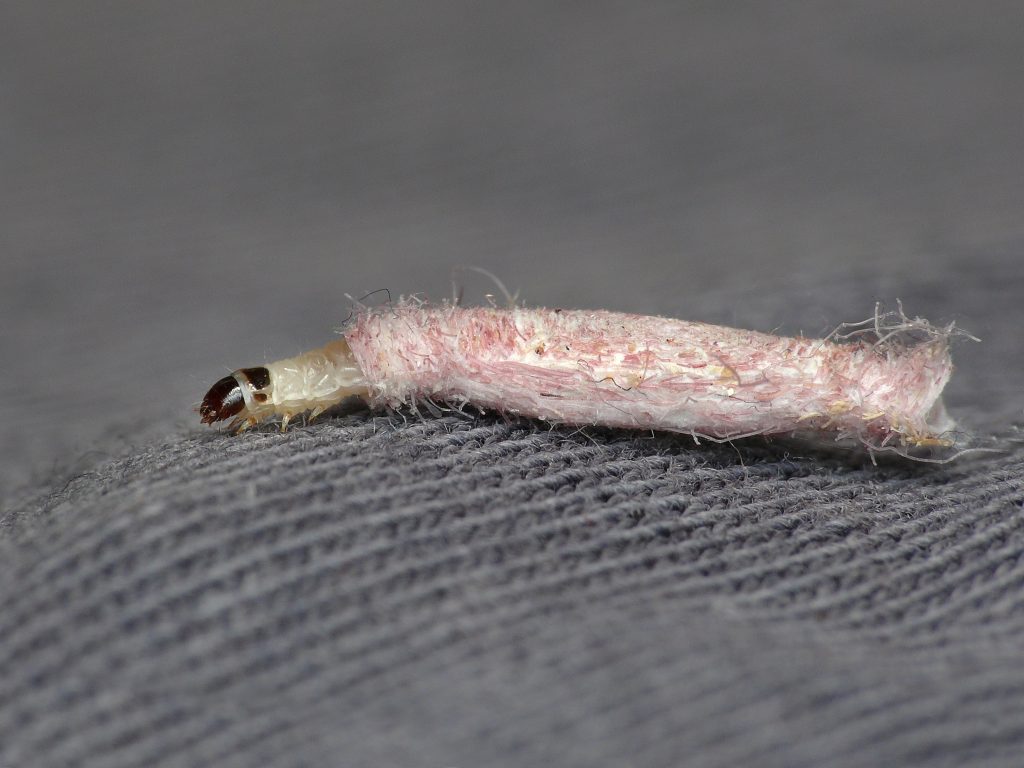Carpet moths can be a persistent and damaging problem in homes and businesses. These insects can cause significant deterioration to carpets, rugs, and other soft furnishings. The larvae feed on natural fibres, including wool and silk, destroying them in the process. Since woollen carpets and rugs are often expensive, finding them eaten by insects can be deeply frustrating for property owners. In this blog post, we’ll explain what causes carpet moth infestations and how to get rid of them quickly and effectively.
Do we have carpet moths in the UK?
If your carpet is being damaged by moths in the UK, it’s most likely due to the Common Clothes Moth (Tineola bisselliella) or the Case-bearing Clothes Moth (Tinea pellionella). Despite the name, both species feed on the same material—keratin—a protein found in natural fibres such as wool, silk, and animal hair. They don’t discriminate between clothing and carpets; both are equally vulnerable.
These moths are commonly referred to as “carpet moths” when they infest flooring, and “clothes moths” when found in wardrobes—even though they’re often the same species.
It’s important to note that the adult moths do not cause the damage. The real culprits are the larvae, which feed on natural fibres. However, adult female moths lay the eggs that hatch into destructive larvae, so getting rid of the visible flying moths is still crucial to breaking the life cycle.

So what moths are eating your carpets in the UK?
What causes UK carpet moths
Carpet moth eggs and larvae often enter homes or businesses unknowingly via human or animal activity. In nature, these insects feed on sources of keratin such as animal hair, feathers, or natural fibres. When pets or people come into contact with infested areas outdoors, they can inadvertently carry eggs or larvae indoors on shoes, clothing, or pet fur.
Another common source is second-hand furniture or rugs, which may already be infested. That’s why it’s important to thoroughly inspect and clean any pre-owned items before bringing them into your property.
How to identify the moths?
Carpet moths, like clothes moths, undergo a four-stage life cycle: egg, larva, pupa, and adult. Recognising these stages is key to identifying an infestation early. The Common Clothes Moth and the Case-bearing Clothes Moth belong to the same family and look similar at different life stages.
Eggs
Carpet moth eggs are tiny—about 0.5mm in length—and are almost impossible to see with the naked eye. This stage lasts 4 to 10 days, after which the eggs hatch into larvae.
Larvae
The larvae are the damaging stage of the lifecycle. Typically creamy-white with darker heads, their colour may vary slightly depending on what they’re feeding on. They hatch at a few millimetres in length but can grow up to 1–1.5cm before pupating.
The larval stage lasts anywhere from 2 to 30 months, depending on environmental conditions—particularly temperature, humidity, and food availability. Damp carpets, or areas affected by spills or leaks, support faster larval development since the larvae absorb moisture through the materials they consume.
When searching for larvae, check low-traffic areas such as under furniture, along skirting boards, or behind radiators—anywhere dark and undisturbed.

Pupa
During this stage, which lasts around 8 to 10 days, the larvae spin a silk cocoon and undergo metamorphosis. You may spot empty cocoon casings or silk webbing—clear signs that moths are developing in your carpet.
Adult Carpet Moths
Adults have a wingspan of about 1.4 to 1.8cm. They don’t feed on fabrics, but the females lay 40 to 50 eggs every 4 to 7 days. This means even a small number of adults can lead to a rapid infestation, as just one mating pair can result in hundreds of new larvae within a few weeks.

How to get rid of carpet moths (aka clothes moths)
Dealing with carpet moths effectively requires a multi-step approach targeting all stages of their life cycle. Here’s how to get rid of them fast:
1. Vacuum Thoroughly and Regularly
Vacuuming is one of the simplest yet most powerful tools for controlling carpet moths. It removes eggs, larvae, and adult moths from your floors and furnishings. Focus on baseboards, skirting boards, under furniture, and other undisturbed, low-traffic areas. Use vacuum attachments to reach corners and edges.
2. Apply Insecticidal Sprays
Use insecticide sprays specifically formulated to kill clothes and carpet moth larvae. Follow the manufacturer’s instructions carefully, use protective clothing, and ventilate the area. Be sure to keep children and pets away from treated surfaces until dry.
3. Use Moth Traps and Glue Boards
Pheromone traps attract adult male moths, disrupting their breeding cycle. These sticky traps are widely available online (e.g. Amazon) and can be placed discreetly around infested areas to monitor and reduce moth populations.
4. Reduce Clutter
Moths prefer to lay eggs in dark, undisturbed areas. Reducing clutter on your floors makes it easier to clean and reduces the number of hiding places for larvae and eggs.
5. Store Seasonal Clothing Properly
Natural fibre garments not in regular use should be stored in airtight, dry containers such as vacuum-sealed bags. This helps protect valuable clothing and rugs from infestation.
6. Call Merlin: If you run a textile business or any other business, where moth infestations present a risk to trade, then don’t take any chances with DIY solutions. Call Merlin to come in and make sure your moth problem is fully eliminated using best in class commercial moth treatment.

